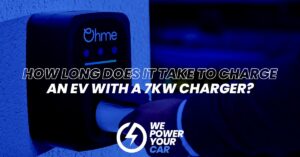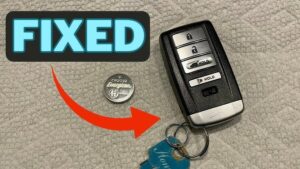Does your charger refuse to do its job? Frustrating, isn’t it? You plug it in, eager to get your device back to full battery, only to be met with silence. So, why does my charger not work? Well, fear not! In this article, we will delve into the reasons behind this issue and provide you with simple solutions to get your charger up and running again. From faulty cables to power surges, we’ve got you covered. So, let’s jump right in and unravel the mysteries of why your charger may be giving you a hard time.
Why Does My Charger Not Work?
Have you ever plugged in your charger, expecting it to seamlessly power up your device, only to be met with frustration and disappointment? It’s a common scenario that many of us have experienced. But why does this happen? Why does your charger sometimes fail to work when you need it the most?
In this article, we’ll explore the various reasons behind charger malfunctions and provide you with practical solutions to get your charging woes sorted. So, let’s dive in and shed some light on this common issue.
1. Faulty Charger
One of the primary reasons your charger may not work is that it’s faulty. Over time, chargers can experience wear and tear. Wires may become frayed, connectors may loosen, or internal components may fail. Here are some signs to look out for:
- The charger doesn’t fit snugly into the device’s charging port.
- The connector feels loose or wobbly.
- There are visible signs of damage on the charger, such as exposed wires or a bent connector.
- The charger only works in certain positions or when held at a certain angle.
If you notice any of these signs, it’s likely that your charger is faulty. In such cases, it’s best to replace it with a new one. Always choose chargers from reputable manufacturers to ensure quality and compatibility with your device.
2. Incompatible Charger
Using an incompatible charger can also lead to charging issues. While it may seem convenient to borrow a charger from a friend or use a generic one, doing so can cause harm to your device or hinder charging altogether. Here’s why:
- Voltage and amperage mismatch: Chargers have specific voltage and amperage ratings that must match your device’s requirements. Using a charger with higher or lower ratings can damage your device’s battery or prevent proper charging.
- Connectivity issues: Some chargers may physically fit into your device’s charging port but lack proper compatibility. This can result in intermittent charging or no charging at all.
- Quality concerns: Generic or counterfeit chargers often compromise on quality and safety standards. These chargers may not provide a stable and reliable flow of power to your device, leading to charging problems.
To avoid these issues, always use chargers recommended or provided by your device’s manufacturer. If you need to purchase a new charger, ensure it’s compatible with your device’s specifications.
3. Dirty Charging Port
Another common culprit behind charging problems is a dirty or obstructed charging port. Dust, lint, and debris can accumulate over time, causing poor contact between the charger and the device’s charging port. This can result in intermittent or no charging. Here’s what you can do:
- Gently inspect the charging port with a flashlight to check for any visible debris.
- If you spot any dirt or lint, power off your device and use a small, non-metallic tool (such as a toothpick or plastic opening tool) to carefully remove the debris.
- Blow into the charging port or use compressed air to clear out any remaining debris.
- Once the charging port is clean, try connecting the charger again and see if it works.
Remember to be gentle while cleaning the charging port to avoid causing any damage. If you’re unsure or uncomfortable performing this task yourself, it’s best to seek professional assistance.
4. Software or Firmware Issues
Believe it or not, software or firmware issues can also disrupt the charging process. Here’s how:
- Operating system glitches: Occasionally, software glitches can interfere with the charging process. Restarting your device or updating the operating system may help resolve the issue.
- Outdated firmware: Manufacturers often release firmware updates that improve device performance and address charging-related bugs. Ensure your device is running the latest firmware version available.
- Third-party apps: Certain third-party applications may consume an excessive amount of power, preventing your device from charging effectively. Uninstalling or disabling such apps can help restore proper charging functionality.
Regularly updating your device’s software and keeping it free from unnecessary apps can minimize the chances of software-related charging problems.
5. Battery or Device Issues
Sometimes, charging problems may stem from the device or battery itself. Here are a few potential issues to consider:
- Defective battery: If your device fails to charge even with a new charger and a clean charging port, it’s possible that the battery itself is faulty. In such cases, contacting the device’s manufacturer or visiting a certified repair center is recommended.
- Hardware damage: Physical damage to your device, such as a bent charging pin or a damaged circuit, can disrupt the charging process. Consult a professional technician to assess and repair any hardware damage.
In these scenarios, troubleshooting at home may not suffice, and professional assistance might be necessary.
Summary
In conclusion, a charger not working can be attributed to various factors, including a faulty or incompatible charger, a dirty charging port, software or firmware issues, and device or battery-related problems. Identifying the specific cause of the issue can help you apply the appropriate solution effectively.
Remember to prioritize safety and quality when selecting chargers for your devices. Regularly clean your device’s charging port to prevent debris build-up, and keep your software up to date to minimize software-related charging problems.
If you’ve tried troubleshooting and the issue persists, don’t hesitate to seek professional help. With the right knowledge and understanding, you’ll be able to tackle charger-related problems and ensure a seamless charging experience for your devices.
Frequently Asked Questions
Why is my charger not working?
There can be several reasons why your charger is not working. Here are some possible causes:
What should I do if my charger is not charging my device?
If your charger is not charging your device, you can try the following troubleshooting steps:
Why is my charger cable not fitting properly?
If your charger cable is not fitting properly, there could be a few reasons for this issue:
Why does my charger stop working after a short period of time?
If your charger stops working after a short period of time, it might be due to the following reasons:
What can I do if my charger gets hot while in use?
If your charger becomes hot while in use, there are a few things you can try to address the issue:
Final Thoughts
In conclusion, there could be several reasons why your charger is not working. First, check if the charger is properly plugged into the power outlet. Ensure that the cable is not damaged or frayed, as this can prevent proper charging. Additionally, check if the charging port on your device is clean and free from any debris. If these steps do not resolve the issue, the charger itself may be faulty and may need to be replaced. By troubleshooting these common issues, you can determine why your charger is not working and find a solution that allows you to charge your device effectively.



